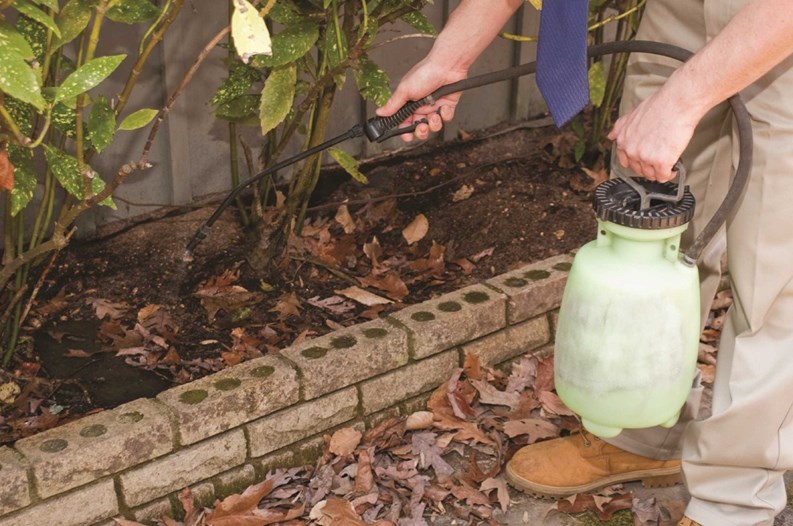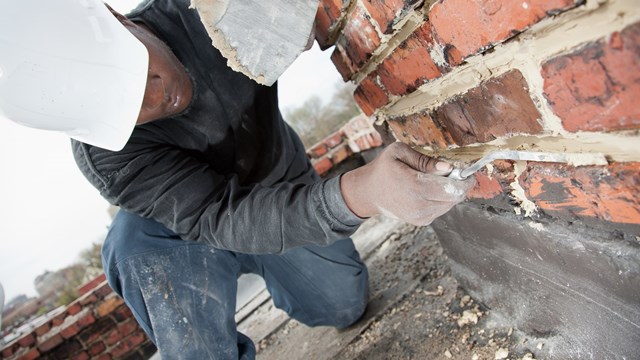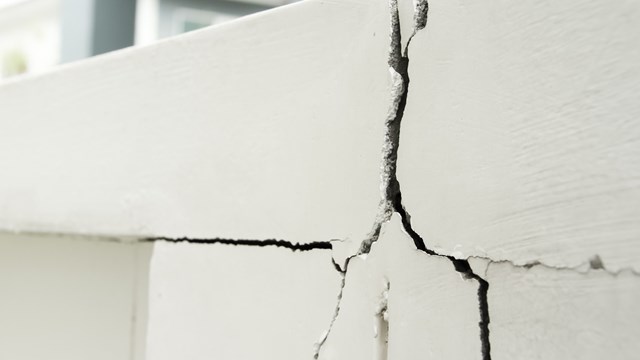If your association is thinking about taking a more natural approach to its landscape, giving up toxic chemicals in favor of organic solutions, consider yourself special.
According to Ian Orlikoff, owner of Eco Logic Land Care in Naples, “Florida is probably the toughest area in the country in which to promote organic lawn care. I have to go all the way up to New York and Connecticut to receive my training,” at such organizations as the Northern Organic Farming Associations in New York, where he received his organic certification. Florida has very few organic certification programs (the Gainesville-based Florida Organic Growers is a notable exception).
“There are certain areas of the Northeast and Canada,” he adds, “and certain areas of Rhode Island and Long Island, where they are going completely chemical-free in their communities as far as ornamental landscape.”
But the steady growth of Orlikoff’s landscaping company, which utilizes organic methods almost exclusively, is proof that Florida is catching up to its neighbors to the north. “The business is building,” he says. “It’s an educational process. The biggest challenge we face with organic programs in condominium communities is that people are kind of short-term minded.”
John Fideli, vice president of Championship Landscape, a company offering organic landscape design and maintenance with locations across South Florida, explains it this way: “With organics, you might not get the kind of rapid result you get with the more traditional chemicals and fertilizers, and a lot of times the people aren’t too keen on that—they don’t want to wait. If they see any kind of insect on a plant—if they have an outbreak—they want it over and done with.”
Chemical Drawbacks
But while traditional chemical treatments do kill a pest infestation practically overnight, they leave a potentially hazardous residue on the lawns on which residents walk and kids and pets play. And from a more global perspective, toxic pesticides seep into lakes, streams and rivers, killing wildlife and causing damage to the greater environment. Many lawn products that are in common use one day are found to be unsafe and taken out of use the next, as were synthetic pesticides like the chlorine-based DDT and phosphate fertilizers in the past.
“There’s so much information getting ready to come out now that has been kept under wraps for a long time,” claims Orlikoff, due to the lobbying efforts of the large chemical companies. “But now there’s a lot more information that is getting out there, and people are getting more educated.”
And frightened. “We are finding pesticides being passed from the pregnant mother to the infant,” says Orlikoff. “And there are a lot of allergies on the rise because people's immune systems are weakening.” No wonder, says Orlikoff, “my biggest market are people with children or who are very health conscious.”
On the state level, Florida has taken a proactive, green-leaning stance toward lawn treatment, a response to the damage caused to wildlife and fish populations over the last few decades by the runoff onto waterways of toxic chemicals used to treat lawns. The Florida Department of Environmental Protection developed the BMP (Best Management Practices), a required training program for professionals who work with fertilizers and pesticides. The program is facilitated by the University of Florida, as part of its wide-ranging Florida-Friendly Landscaping program.
Florida law prohibits the use of fertilizer with nitrogen or phosphate from June till September to stem poisonous runoff during the rainy season. During those months lawncare professionals all become organic practitioners in one regard: they use fertilizers containing only nutrients such as potassium to build plant immune systems, without the toxins.
Can We Afford It?
While it can be expensive to start up an organic landscaping program, as many association boards fear, it will likely provide significant savings over traditional methods in the long run.
“Organic programs are a long-term roadmap,” explains Orlikoff. “By building your soil quality and placing ‘problem’ plants into the right spot where they can thrive, there is more of an upfront cost, but it will save money in the future.”
By designing the landscape to be self-sustaining and properly irrigated, plants need less fertilizer and insecticides. One landscape professional estimated that you could save as much as 50 percent in water costs the first year because you water less frequently.
A report by Grassroots Environmental Education, a New York-based non-profit, compared the cost of natural vs. chemical turf management on a 65,000-square-acre high school football field over a five-year period. The study found that after an increased cost over the first two years, the natural landscape program saved an average of more than 25 percent per year.
Digging in the Dirt
The goal of an organic landscaping program is simple: to create an eco-system that supports healthy grasses and plants that survive without the aid of toxins to kill pests like insects or weeds. And the eco-system within every development is different. Unlike traditional lawn care, which treats every landscape the same, which is say, cover anything that grows with poison spray, each organic landscape program is unique.
To customize the program, the first thing an organic landscaper will do is analyze the soil to determine what sort of natural fertilizers, such as compost (plant and food waste decomposed by bacteria, fungi and other organisms) or mulch to apply to the soil to help bring it to its most nutritive state.
The landscaper will then evaluate the irrigation system to make sure the right amount of water is applied in the right locations at just the right time. For example, they might have to divert the water from a downspout away from plants that don’t like water onto plant beds that do.
After a redesign of the irrigation system, the association needs to modify their watering program with the seasons. South Florida has just two climates, generally speaking—summer and spring. “Coming into summertime,” says Fideli, “you start getting rain so we need to turn the irrigation down because watering can cause weeds or roots in your turf to rot because your plants or your turf are floating on water in a sense and anything that sits in water will eventually rot.”
The rest of the year, the lawn needs adequate water, says Fideli, “but you don’t want to be over doing it—perhaps 30 minutes run-time and then give it a few days to soak it up. Let the roots search for the water. If your grass starts to wilt, then you want to start watering.”
After addressing the irrigation system, says Orlikoff, “We look for problems and make recommendations on what should be corrected and prioritize them. That way the condo can decide how much to do this year and how much to do next year.” Correcting a problem can be as simple as pulling a plant up half a foot. “Planting too deep is basically giving a plant a death certificate,” he says.
Getting Off the Hard Stuff
Treating grassy areas and plants damaged by pests, “chemicals are a last ditch resort,” explains Fideli. “Your maintenance, your mowing, your irrigation, fertilizing and having a good IPM [integrated pest management] program in place can deter or keep away a nuisance insect.”
You don’t want to kill every pest on the property. “Not all insects are bad,” says Fideli. “It’s good to have some insect life in your landscape or in your garden—like honeybees, which help pollinate plants and flowers.” Nobody likes spiders, he adds, “ but they are not bad to have around; they feed off nuisance insects.”
According to Orlikoff, “part of the program is bringing the system into balance, where you’ve got good bugs competing with bad bugs. That involves bringing in the beneficial insects.”
Decorative plants are particularly responsive to organic solutions. “I have had good luck with things like insecticidal soaps and horticultural oils,” says Fideli. “All of these come from natural things, from seeds and different plants. Most of the time they are oil-based and have a minimal impact on the environment, if any.”
A very effective insecticide made from the seed of the neem tree, an Asian plant, is popular. Soap made with potassium or sodium salts combined with fatty acids is another safe insecticide. Potassium bicarbonate is particularly effective against fungus.
The Diverse Landscape
To get the maximum benefit of an eco-friendly landscape will take some sacrifice, most notably of ground cover.
“Grass is a monoculture,” explains Orlikoff, “and monocultures are very susceptible to disease and insects. A landscape with a lot of diversity is a more successful landscape. I recommend to my clients to go with less grass. There are a variety of ground coverage alternatives: more landscaping beds, more natural areas with beneficial plants, like jasmine—native plants that are drought tolerant, that don’t have the disease and insect issues that grass has. You can use mulched areas, rock gardens, or some other sort of green ground cover that may have a similar effect of grass but doesn’t have the maintenance issues of grass.”
The association can choose how far or fast they want to go eco-friendly. “You can redesign some of the landscape over a period of time,” says Orlikoff. “You can start working some of those grassy areas out and breaking it up into more of an easily manageable landscape that doesn’t require fertilizing, chemical sprays and mowing.”
Each patch of landscaping must contain the appropriate plant, he insists. “I’ve had clients that have been spraying a certain plant constantly for years and years—spending all this money when they can just pull it out and put it in a spot where it will thrive.”
Florida lawns are particularly susceptible to chinch bugs and white grub worms. “They will do a number on your turf if you don’t catch them soon enough,” says Fideli. “And unfortunately, I haven’t found a lot of things that work well on turf on the organic side—and a lot of stuff that you wind up using for turf insects like chinch bugs or white grubs are pretty toxic chemicals.”
The solution for communities too much in love with their vast expanse of grass to give up an inch of it: “Use the least amount of chemicals as possible,” advises Fideli. “You don’t do a full strength application. If you catch an infestation early enough, you can typically get away with doing that. It’s not the organic solution, you’re still using harsh insecticides, but you’re putting less of it out into the environment.”
Too many pest control operators or landscape companies that do pest control blanket the entire landscape with insecticide, observes Fideli, including areas that are pest free. “Not only is it costly but you put more of this threat out into the environment.”
With proper maintenance over time, the lawn will require less pesticide, he says. “Most times turf insects want to go somewhere else before they go to a lush green healthy yard that is properly maintained.”
According to Orlikoff, “Insects love feeding on plants that are stressed. Plants have immune systems; they produce chemicals to fight bugs.”
Once the community begins an organic program, says Orlikoff, “they take more notice of their landscape—understand it better and become more involved. And when they do that they start realizing it is kind of ridiculous to be cutting the grass all the time and they want to eliminate more of it.”
While Florida homeowners have been slow to catch on, more and more are embracing the natural approach, says Orlikoff. “I would talk to customers 10 years ago and explain things I would do organically to their plants and they would look at me like I had three heads on my shoulders. Now the same clients come to me asking if there is anything we can do besides putting all these fertilizers down.”
Steven Cutler is a freelance writer and a frequent contributor to The South Florida Cooperator.







Leave a Comment